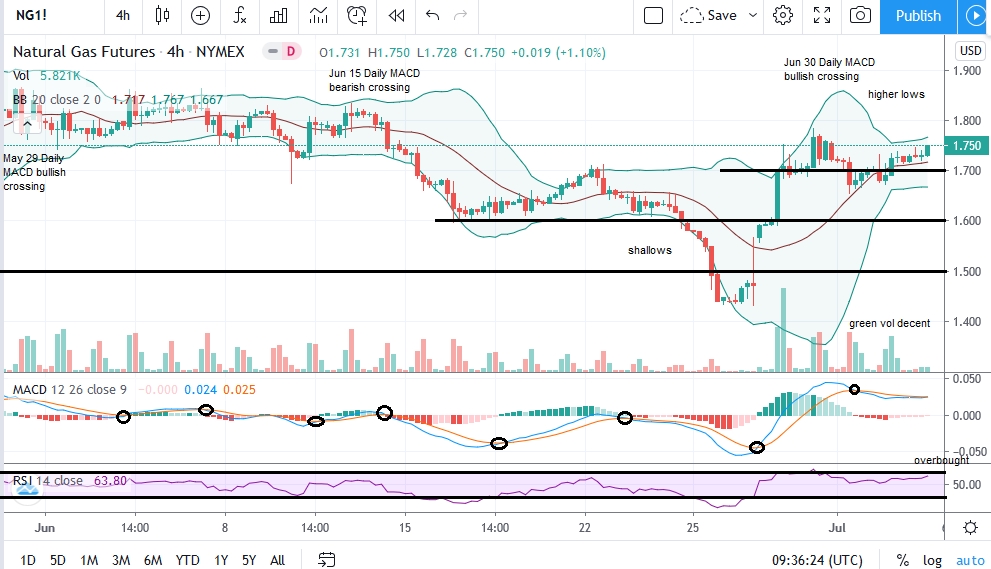Natural Gas Futures on the Nymex rallied significantly, closing 13.6% higher than a week ago at $1.75 on Friday. EIA confirmed on Thursday a rather bullish build for this time of year, of only 65 Bcf in working underground stocks for the week ended June 26.
Inventory is currently 30.1% higher y/y, 17.8% above the 5-year average. The price is now 27% lower y/y. As we have anticipated, warmer weather across the Lower 48 impacts demand which had remained extraordinarily steady during the lockdown.
Dog Days are important and they are offering better visibility for the coming winter contracts as summer demand at its peak is only half of winter's. The January contract is currently at $2.90. Once again, I want to express that the U.S. LNG exports account less than 4% of total production, 90% of which is being consumed domestically.
Production fell further at 90 Bcf/d in June, down 3.7 Bcf/d from March, at a time when discounted natural gas prices resulted in a further increase in consumption for power generation. Consumption for electricity generation, for industrial, commercial, and residential use absorbs more than 90% of the natural gas produced in the United States.
These market shares are the ones we have to pay closer attention to, even if President Trump keeps pushing for LNG export flows to Asia and Europe, it might not be necessary, as long as natural gas is competing well with renewables for domestic market share following the industry's consolidation.
We are trading the near term charts on momentum and buying the dips, as we are assuming the direction of the market is up. We have recently identified a floor following the post-winter downtrend, we have been observing higher lows since then while the price is ranging typically enough, looking now for a breakout in an uptrend in fall. A higher support level at $1.70 - $1.80 needs to hold first. Winter prices have already been trading relatively high and in decent volumes, so dips and bounces will look totally normal for Natural Gas along the way. U.S. macro data have to be routinely monitored. Daily, 4hour, 15min MACD and RSI pointing entry areas. 
